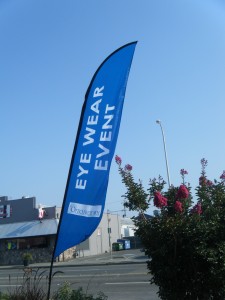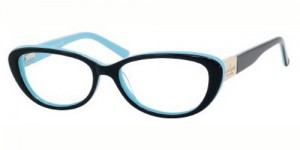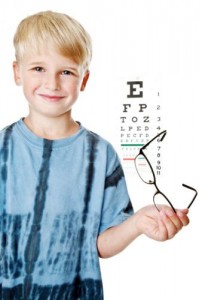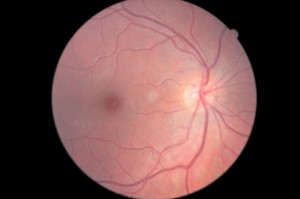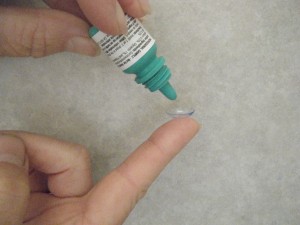Blog
Protecting Children’s Eyes from Sun Damage
Parents generally take precautions to protect their children’s skin from the sun; it is equally important to make every effort to protect children’s eyes from the sun’s harmful ultraviolet (UV) rays and glare. Just as we may not see the damage to our skin for years, we also may not see the damage to our eyes for some time. But each part of the eye can be damaged by chronic or high-dose exposure to UV radiation. Even the glare of an overcast day can add to the cumulative affect. Possible effects of long-term sun exposure to the eyes include:
- The development of skin cancer on the eyelids
- Changes to the surface of the eye, such as non-cancerous growths on the white of the eye
- Over time, the lens becomes more opaque and decreases vision forming cataracts
- Damage to the retina, which can lead to age related macula degeneration, the leading cause of legal blindness in the US in people over 65 years.
In fact studies conducted over the last 30 years have proven that many of the serious eye diseases associated with aging are at least partially a result of years of sun exposure. Protecting children’s eyes are especially important due to two significant factors:
- Children spend more time outdoors. The average child receives 80% of his lifetime UV exposure before the age of 20.
- More damaging rays are transmitted through the young child’s crystalline lens to the retina. The eyes of children 10 years and younger transmit 75% of these rays; people 25 years or older only transmit 10%.
The simplest and most efficient way to prevent or delay the onset of  progression of various eye diseases is by using sunglasses or photochromic protective lenses designed to protect all damaging sun rays from reaching the eyes, ideally starting in early childhood. For a child who already wears corrective lenses, this can be achieved with polycarbonate photochromic lenses, which change color according to UV exposure. For a child who does not wear corrective glasses, a high quality pair of sunglasses is recommended.
progression of various eye diseases is by using sunglasses or photochromic protective lenses designed to protect all damaging sun rays from reaching the eyes, ideally starting in early childhood. For a child who already wears corrective lenses, this can be achieved with polycarbonate photochromic lenses, which change color according to UV exposure. For a child who does not wear corrective glasses, a high quality pair of sunglasses is recommended.
What is a Trunk Show?
A “Trunk Show” is a special sale in which vendors present merchandise directly to store buyers or select customers. They are referred to as “trunk shows” because a designer or sales rep will literally show up with a trunk of merchandise to show off.

In the case of eyewear, all the colors, all the sizes, in all the styles are available. At Westside Optometry, we typically inventory the most popular styles and colors due to limited space, at a trunk show you can try on everything.
On Saturday, September 15th, we are hosting collections from Maui Jim and Kate Spade. The Maui Jim line is comprised of sunglasses. Some can be made with a prescription, others are designed for particular activities, to be worn over contact lenses or with no prescription. All the lens colors will be available to try. We are setting up displays in our parking lo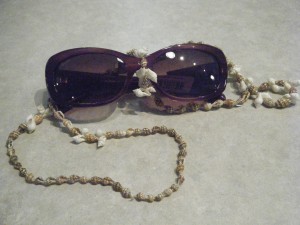 t to better appreciate the clarity of the Maui Jim lens.
t to better appreciate the clarity of the Maui Jim lens.
Inside the office, the Kate Spade designer line will be presented. Kate Spade’s newest designs include the graphic prints of Australian artist Florence Broadhurst. The sales representative will also have Denim, an economical men’s line.
The Maui Jim Sunglass featured above is called Lani and is pictured in the amethyst fade, it is also available in tortoise and black. The Kate Spade frame below is named Stephie and is pictured in the black/pool, she is also available in cafe latte, mahogany/pink and tortoise/kiwi. Stop by on Saturday to try on all the amazing colors and styles.
The Trunk Show starts at 10:00 and ends at 2:00. There will be refreshments and a raffle for a pair of Kate Spade earrings.
High Blood Pressure and the Eyes
High Blood Pressure (HBP) is a serious condition that can lead to coronary heart disease, heart failure, stroke, kidney failure and vision loss. “Blood Pressure” is the force of blood pushing against the walls of the arteries as the heart pumps blood. If this pressure rises and stays high over time, it can damage the body in many ways.
About 1 in 3 adults in the United States has HBP. The condition itself usually has no signs or symptoms. You can have it for years without knowing it. During this time, the HBP can damage your heart, blood vessels, kidneys and eyes.
Blood Pressure tends to rise with age. Sometimes medication can control it. Following a healthy lifestyle helps people delay, prevent or control the BP.
Hypertension can cause damage to the blood vessels in the retina. This picture of the retina shows an eye with hypertensive retinopathy. The arrows point to arteries and veins crossing each other. In a healthy eye the vessels run  parallel. The crossings are dangerous because one of the vessels can be occluded. If an artery is blocked, blood will not flow to the retina beyond the occlusion and the retina will die. This causes a permanent blind spot. If a vein is occluded there will be bleeding which may cause a chain of negative events including loss of vision, abnormal vessel growth and glaucoma.
parallel. The crossings are dangerous because one of the vessels can be occluded. If an artery is blocked, blood will not flow to the retina beyond the occlusion and the retina will die. This causes a permanent blind spot. If a vein is occluded there will be bleeding which may cause a chain of negative events including loss of vision, abnormal vessel growth and glaucoma.
Hypertensive retinopathy typically won’t have any symptoms. It is found during a dilated eye exam. The earlier it is detected the sooner the blood pressure can be controlled preventing vision loss, stroke and death.
The best way to prevent hypertensive retinopathy is by keeping blood pressure controlled by diet, exercise and taking medications as prescribed.
Polorized vs Gradient Sunglasses
What’s the difference between polarized sunglasses and gradient sunglasses?
Let’s describe each type of sunlens first:
Polarized lenses are typically solid and dark in color. An  additional layer is added to the lens to block out glare from horizontal surfaces such as the hood of a car, the water, and the snow. We recommend adding an anti-reflection coating to the back surface to eliminate all reflections providing the most comfortable vision outdoors. The frame featured to the left is a Calvin Klein sunglass, it can be purchased with plano (no prescription) polarized lenses or with a prescription.
additional layer is added to the lens to block out glare from horizontal surfaces such as the hood of a car, the water, and the snow. We recommend adding an anti-reflection coating to the back surface to eliminate all reflections providing the most comfortable vision outdoors. The frame featured to the left is a Calvin Klein sunglass, it can be purchased with plano (no prescription) polarized lenses or with a prescription.
A gradient lens is darker on the top and lighter on the bottom. This design is 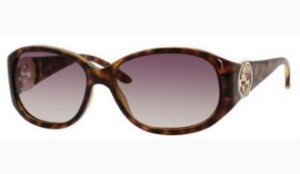 ideal for reading outdoors, and/or leaving the sunglasses on for days that are not as bright. The density of the darkest part of the lens and the color can be varied to accommodate for each individual’s preference. The Gucci frame featured here can be made with a solid polarized lens also.
ideal for reading outdoors, and/or leaving the sunglasses on for days that are not as bright. The density of the darkest part of the lens and the color can be varied to accommodate for each individual’s preference. The Gucci frame featured here can be made with a solid polarized lens also.
This year, a lens combining the attributes of the polarization and the gradient tint became available. The color of the lens and lens materials are limited, but we are very excited to expand your sunlens choices. 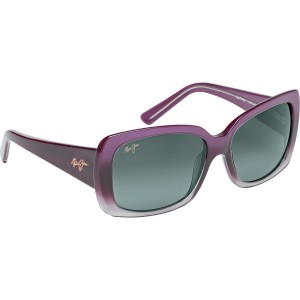 The Lani by Maui Jim is an example.
The Lani by Maui Jim is an example.
Westside Optometry will be featuring all the Maui Jim Sunglasses at our Fall Eyewear Event, Saturday September 15th.
Visual Stress and Technology
A study published by the New York Times in 2009 revealed adults are exposed to screens – TV, cell phones, computers, etc. – roughly eight and a half hours on any given day.
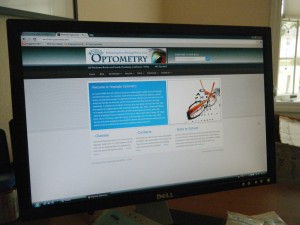 Even the smallest uncorrected prescription can cause problems at the computer. This is especially true if you happen to be far-sighted or have astigmatism, due to the excessive focusing required to maintain a clear image.
Even the smallest uncorrected prescription can cause problems at the computer. This is especially true if you happen to be far-sighted or have astigmatism, due to the excessive focusing required to maintain a clear image.
Dry eyes and poor tear quality can cause blur and eye discomfort. We tend to blink less often when viewing the computer allowing the tears to evaporate.
Some solutions to eyestrain at the computer or with other digital devices include a correction specific for the task. For example, a pair of computer glasses designed with optimal correction at the distance to the digital display and including appropriate coatings and tints to reduce strain and improve efficiency.
Reducing glare from overhead lights and windows will minimize squinting. Simply adjusting the screen position, closing window blinds and decreasing the wattage of a desk lamp will reduce glare. To see an earlier post with more details click here.
Give your child every chance to see, learn and play
Did your child pass the vision screening administered at school last year? Did he see the acuity chart tacked to the door at the pediatrician’s office? Although these tests are helpful in spotting a few basic eye problems, they don’t take the place of a comprehensive eye examination.
Very often screening tests simply measure how well your child can see at a distance. Other vision concerns, such as farsightedness, lazy eye, crossed eyes, poor eye coordination, or poor depth perception may go undetected. Often children do not recognize these problems themselves because they have “always seen it this way.”
Parents and teachers may be puzzled about a child’s slow progress in school. For example, if a child is farsighted, he or she will see distant objects clearly, but may have problems focusing the eyes for close work. The same child who can read the eye chart easily at a distance may have a difficult time seeing words close up in a textbook or on a math worksheet. As a result, reading problems may develop that can affect the student’s learning and achievement.
A comprehensive eye examination includes measurements of the vision at distances far away which is important for seeing the board and playing sports and closer distances which are important for reading, computers and desk work. The exam also includes evaluation of how the eyes work together and the ocular health.
Success during the first few years of school can significantly impact your child’s confidence and success. If a child can’t focus, track (follow words on a page) and otherwise see properly, reading and development will be delayed making school a frustrating experience.
When scheduling back-to school appointments, don’t forget to include the eye doctor.
Wearing Contact Lenses Overnight
Have you ever wondered what would happen if you wore your contact lenses overnight? Unexpectedly stayed the night at a friends house and didn’t have anywhere to put your lenses? Enjoying a late night and fall asleep with your contacts on?
It happens, contact lenses get worn too long and sometimes over night. Some contact lenses are better for this than others. I prescribe and fit people with the intention of overnight use. I also warn patients about the risks they are taking with their eyes.
Depending on the contact lens type and material, oxygen is reduced to the cornea. Movement of the contact with each blink aids the transmission of oxygen. When you are sleeping with the contact lens, the eye is closed and no oxygen gets to the cornea. There is no blinking either so the lens doesn’t move. The reduction in oxygen causes the cornea to swell, if the lens allows plenty of oxygen to get to the cornea during the day, the cornea will deswell and return to normal. However, if the cornea remains swollen, and you sleep in the lens consecutive nights, blood vessels will begin to grow into the cornea. Sometimes the eye responds by becoming inflamed, red and painful.
Another risk of leaving the lenses in overnight is infection. Typically when a lens is removed it is thrown away or placed in disinfecting solution. In the morning a new lens or a clean, disinfected lens is applied to the cornea. Microbials build up on a lens that is worn continually. If your cornea is compromised by a scratch or edema, the bacteria will infect the eye.
If you have been prescribed extended wear contact lenses, stay compliant to your wear schedule, once in awhile overnight or 6 consecutive nights. Clean and replace your lenses as prescribed. If you are wearing your daily wear contacts overnight, let’s talk about a safer option. This may include a higher oxygen material or even LASIK. Sometimes the prescription can be a limiting factor. If the prescription is higher, farsighted or is toric and corrects astigmatism, the lenses will be thicker and reduce oxygen transmissability.
What is an Epiretinal Membrane
An Epiretinal Membrane (ERM) is also known as Cellophane Maculopathy or Macular Pucker. Sometimes it is simply referred to as a “wrinkle.” In most cases, a Posterior Vitreous Detachment (PVD) has occurred. This vitreous activity causes the macula to generate cells and create a scar-like membrane. This thin tissue layer can contract and cause a wrinkle.

In the above picture of the inside of an eye, the whitish irregularities on the left side is the membrane. The photo below shows a normal macula, note the the smooth and regular color on the left side. The dark spot to the left in each photo is the macula.
The macula provides sharp, central vision and allows us to see details. Any change in the surface, like a wrinkle, will cause distortion and blur. ERM usually occurs in one eye only. The initial onset of the blur and distortion can be very alarming, but most people get used to it depending on the extent. Sometimes it resolves on its own, but mostly it stays the same. If you are noticing this type of vision change it is very important to have an examination for a correct diagnosis. Blur and distortion can be symptoms of other conditions, such as a macular hole.
In cases where the vision is significantly impaired a surgical procedure can be done. A vitrectomy is performed to remove the vitreous, then very delicately the surgeon peels the membrane off of the macula. This often reduces distortion and improves the vision, but not completely. Retinal surgery is not without risks, the most common risk is the development of cataracts, but any damage to the macula during the procedure can cause permanent visual impairment.
ERM is not the same as Macular Degeneration.
Contact Lens Tip
An easy way to make contact lenses more comfortable is to put a drop of artificial tears into the eye or onto the lens before putting on the contact lens. The scientific basis for this includes physical lubrication which enhances comfort by reducing dryness and protecting the cornea (surface of the eye). It also increases viscosity and lowers the tear film tension so the eye stays wetter.
In addition, the common ingredient in artificial tears is carboxymethylcellulose (CMC). The CMC is negatively charged so it binds to the preservatives in the multi-purpose disinfecting solutions to decrease irritation.
If your contact lenses are uncomfortable and you find yourself taking the lenses out earlier each day or not even putting them in, call Westside Optometry to schedule an appointment.
